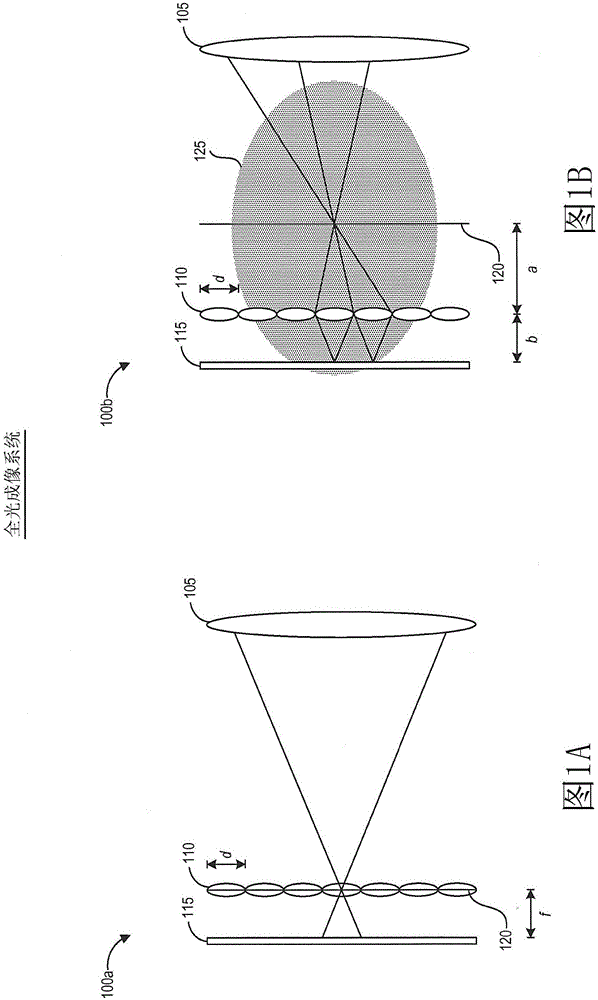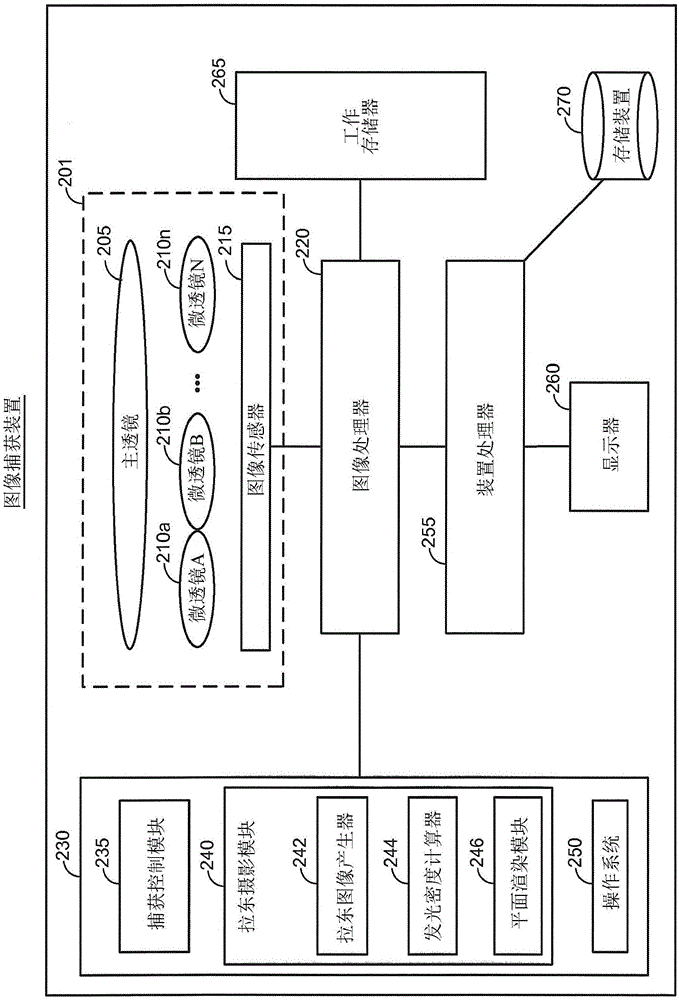Generation and use of a 3d radon image
An image and micro-image technology, applied in image enhancement, image analysis, image communication, etc., can solve the problem of expensive data processing of all-optical sensors
- Summary
- Abstract
- Description
- Claims
- Application Information
AI Technical Summary
Problems solved by technology
Method used
Image
Examples
Embodiment Construction
[0022] introduction
[0023] Embodiments of the invention relate to systems and techniques for capturing plenoptic image data, processing the plenoptic image data to increase efficiency, and rendering from the processed plenoptic image data. The Radon photography technique described here alters the structure of the captured plenoptic data to define the luminosity of the target image scene in terms of the energy contained in a two-dimensional plane rather than in one-dimensional rays, which can increase the amount of image data Effectively reduces by about an order of magnitude. For example, in some implementations, this may be accomplished by applying a Radon transform to the plenoptic image data, thereby producing a Radon image. A dynamically refocusable image may be rendered from a Radon image by applying an inverse Radon transform to restore the luminosity of the image scene from the Radon image. In one example, a Radon image may be approximately 1 megabyte (MB interfac...
PUM
 Login to View More
Login to View More Abstract
Description
Claims
Application Information
 Login to View More
Login to View More - R&D
- Intellectual Property
- Life Sciences
- Materials
- Tech Scout
- Unparalleled Data Quality
- Higher Quality Content
- 60% Fewer Hallucinations
Browse by: Latest US Patents, China's latest patents, Technical Efficacy Thesaurus, Application Domain, Technology Topic, Popular Technical Reports.
© 2025 PatSnap. All rights reserved.Legal|Privacy policy|Modern Slavery Act Transparency Statement|Sitemap|About US| Contact US: help@patsnap.com



